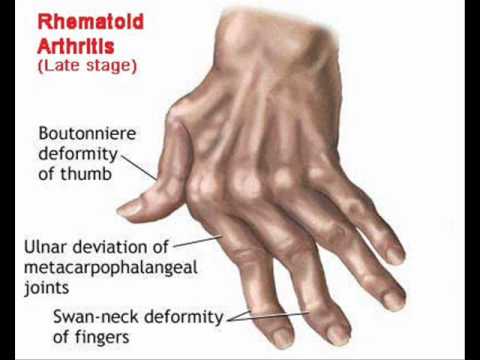Joint pain can be either a temporary problem or a long-lasting health condition. It can be the result of an infectious disease, trauma, genetics, or a combination of many different predisposing factors. It may appear in children, adolescents, and adults. Evidently, joint pain is a health condition with a high level of complexity, and there are plenty of classifications and stages according to each diagnosis.
Rheumatoid arthritis is not the exception, and many patients would likely feel lost when listening to the doctor talking about stages of rheumatoid arthritis. There are many types of classifications. Some of them take into consideration radiologic findings (evaluated through imaging studies), others would also include clinical findings (evaluated through a physical exam). Some would include up to 5 stages, and others would only include 4.

After reading this article, you will understand the most common ways to stage the disease and will no longer feel lost after listening to your doctor about the progression of rheumatoid arthritis.
Highlights of rheumatoid arthritis
There are many types of arthritis, but rheumatoid arthritis is by far the most widely known and feared because it is often associated with long-lasting changes and deformity to the articulations with progressive difficulty to perform movements and day-to-day activities. Each patient would experience the disease and its progression in a different way, but they usually start with a persistent join pain in hands and feet, with morning stiffness and other symptoms. The pattern of joint pain is described as symmetric because it affects both hands and both feet, not one at a time.
Most patients would also describe other symptoms, such as malaise, fatigue, weight loss, and fever during pain outbreaks. Swelling in the articulations is a distinctive feature, some patients may even have rheumatoid nodules as firm lumps in the affected joints, and other would start having extra-articular problems such as heart problems, pleural effusion, gastrointestinal inflammation, and others.
But, how exactly can we measure disease progression? That’s the reason why doctors use staging methods to classify rheumatoid arthritis.
5 stages of rheumatoid arthritis
Each articulation meets two different bones together, and since they are hard structures, they need something in between to prevent erosion. That’s why we have articular cartilage and synovial fluid to lubricate movements and prevent damage. When they are lost, the joint space is reduced, and bones start a wear and tear process that would end up destroying the articulation.
This is the Larsen classification of rheumatoid arthritis according to radiological findings on joint space and bone erosion:
- Stage 0: The earliest stage of rheumatoid arthritis would have no differences in the outline of bones, and the joint space would remain the same with no visible erosion. Rheumatoid arthritis is an auto-immune disease, and when patients describe joint pain during this stage, it is caused by molecular damage that is not possible to trace in a radiograph.
- Stage 1: In this stage, there are slight changes in the radiograph. Doctors would describe a slight joint space narrowing that might be difficult to measure. The auto-immune problem and the associated inflammation starts causing visible swelling in the soft tissue around the articulation, some radiographs would also suggest a reduction in mineralization (osteoporosis) in the area of the articulation, and if there is any erosion to the bone tissue, it is less than 1mm in diameter.
- Stage 2: Different from stage 1, stage 2 has noticeable changes to the joint tissue. There’s a definite abnormality in the structures of the articulation, an obvious inflammatory process in the soft tissue, and erosion of the bone is mandatory with a diameter higher than 1mm.
- Stage 3: In this stage, the inflammation and erosion continue, and the joint space is markedly reduced. Your doctor can even show a normal radiograph, and you will see the contrast in how much space there is between bone endings. Since the protective mechanisms are lost, in stage 3 there are marked erosions in the articulation, but the bony outlines are not affected yet, which means you can still trace the original figure of the bones in the radiograph.
- Stage 4: In this stage, there’s a severe abnormality in the joint. There’s almost no joint space left in between the adjacent bones, and the erosion is even more marked. In stage 4, the erosion is severe enough to cause deformation to the figure of the bones in the radiograph, but there’s still a part of the bony outlines left.
- Stage 5: The last stage of arthritis features a complete loss in the normal anatomy of the joint. There’s virtually no trace of joint space left, and the articular surfaces are now impossible to recognize because the erosion has erased the normal bony outline. The literature describes stage 5 as having “mutilating changes” to the articulation. Along with the severe deformation of the bone endings, there might be even tearing and ruptures to the muscles and tendons attached to the affected bone structures.
Other classifications of Rheumatoid Arthritis and their uses

There are many other ways to stage rheumatoid arthritis taking into consideration other clinical and radiological findings. For example, the Simmens classification is used by orthopedic surgeons because it has a clinical application they can use to predict the pattern of the disease and plan a surgical procedure. Similarly, the Sharp method of classification evaluates joint pain and erosion separately, and it is used as an alternative to the classification by Larsen.
Still, other classification methods would focus on how much the disease affects the lifestyle of the patient, describing 4 different functional classes:
- Class 1: No problems to perform day-to-day activities.
- Class 2: No problems in self-care activities, but limited in some daily activities.
- Class 3: No problems in self-care activities, but limited in daily activities and work-related activities.
- Class 4: Unable or limited in self-care activities and all day-to-day and work-related functions.
This one might be easier to understand by patients because it includes elements they can easily relate to, but if you’re ever confused about the 5 stages of rheumatoid arthritis you can always come back and take a quick look at this summary chart:
| Stage | Joint Space | Bone Erosion |
| 0 | No change | No change |
| 1 | Narrowing not always visible | Less than 1mm, if any |
| 2 | Noticeable narrowing | Mandatory but not marked. More than 1mm |
| 3 | Marked reduction. Obvious contrast | Marked erosions not affecting the bony outline |
| 4 | Almost no joint space left | Bony outline partially lost |
| 5 | No traceable anatomy. No clear joint space | Bony outline totally lost |
Ways to get Joint Pain Relief? FIND OUT MORE
References:
Hoornenborg, D., Somford, M. P., Staal, K. P., & Pöll, R. (2014). Mutilating rheumatoid arthritis in Larsen classification (stage 5). JBR–BTR, 97, 152-153.
Jew, N. B., Hollins, A. M., Mauck, B. M., Smith, R. A., Azar, F. M., Miller III, R. H., & Throckmorton, T. W. (2017). Reliability testing of the Larsen and Sharp classifications for rheumatoid arthritis of the elbow. Journal of shoulder and elbow surgery, 26(1), 140-143.
Aletaha, D., Neogi, T., Silman, A. J., Funovits, J., Felson, D. T., Bingham III, C. O., … & Combe, B. (2010). 2010 rheumatoid arthritis classification criteria: an American College of Rheumatology/European League Against Rheumatism collaborative initiative. Arthritis & Rheumatism, 62(9), 2569-2581.
van de Sande, M. G., de Hair, M. J., van der Leij, C., Klarenbeek, P. L., Bos, W. H., Smith, M. D., … & Gerlag, D. M. (2011). Different stages of rheumatoid arthritis: features of the synovium in the preclinical phase. Annals of the rheumatic diseases, 70(5), 772-777.

I was diagnosed with rheumatoid arthritis 5 years ago. I have stiffness, swelling, carpal tunnel syndrome, and intense pain. I was put on methotrexate and folic acid, I still suffer from stiffness and pain, but now they are saying I haven’t got it. I have osteoarthritis too.
Hi Kamgelo,
Has your Doctor told you what stage of Arthritis you are at?
He should tell you, from the sounds of it you may have later stages.
I hope you get the treatment you need.
Regards
Matthew
Can medicine hamper the development of the last staged?